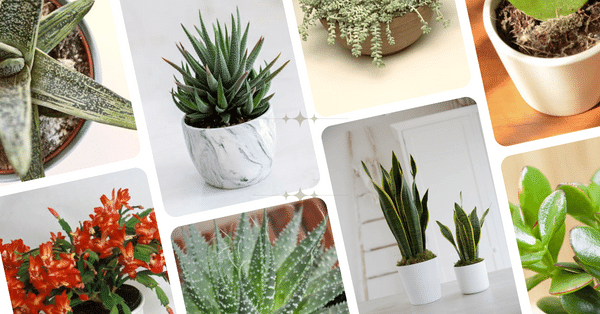20 Tall Succulent Types | Succulents that Grow Tall
Tall succulents are a great addition to any home’s landscape. With their attractive size, these easy-care tall succulent types are great for adding interest to your home or garden.
Succulents have a cute and tiny image associated with them, but you’ll be surprised to know many succulents do not fall under this category. There are tall succulent types out there that are gigantic and stand out among other houseplants. So if you are looking for grandeur, look no further than these tall succulents types.
1. Aloe Vera
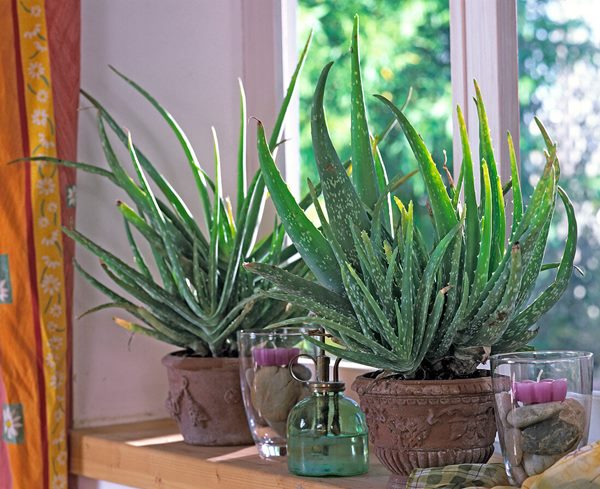
Botanical Name: Aloe vera
The first tall succulent on the list is also the most popular for its medicinal and cosmetic uses. Although not growing very large in the container, when allowed to grow freely in the backyard, aloe vera can grow around 3 feet tall. To attain such height, 6-8 hours of sunlight and well-draining soil are necessary.
2. African Milk Tree
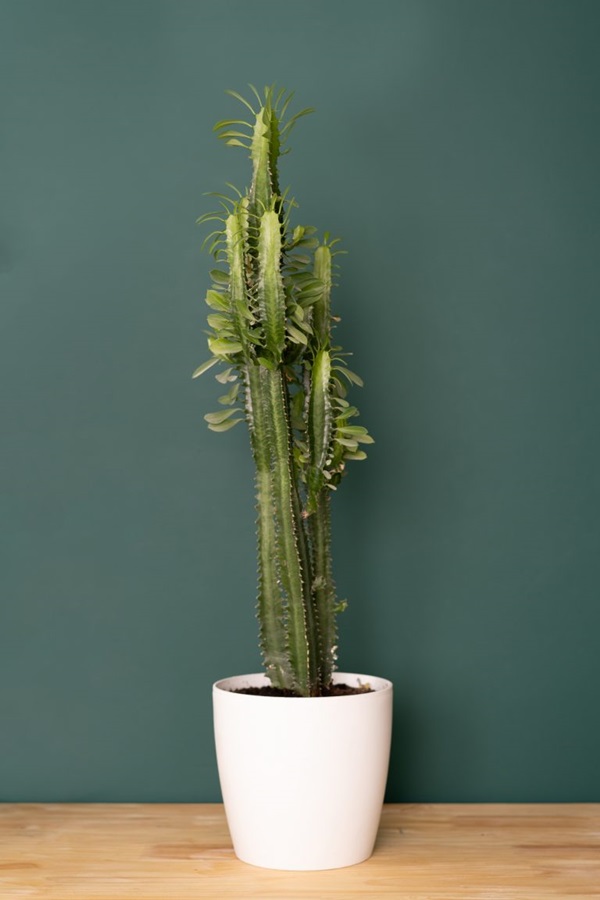
Botanical Name: Euphorbia trigona
Native to central Africa, the African milk tree makes up an excellent hedge plant due to its fast growth. It can reach 9 feet outdoors but won’t grow to its full potential indoors. Also, going by the name Good luck cactus, its triangular stems with three ridged sides gives this succulent a unique appearance.
3. Snake Plant
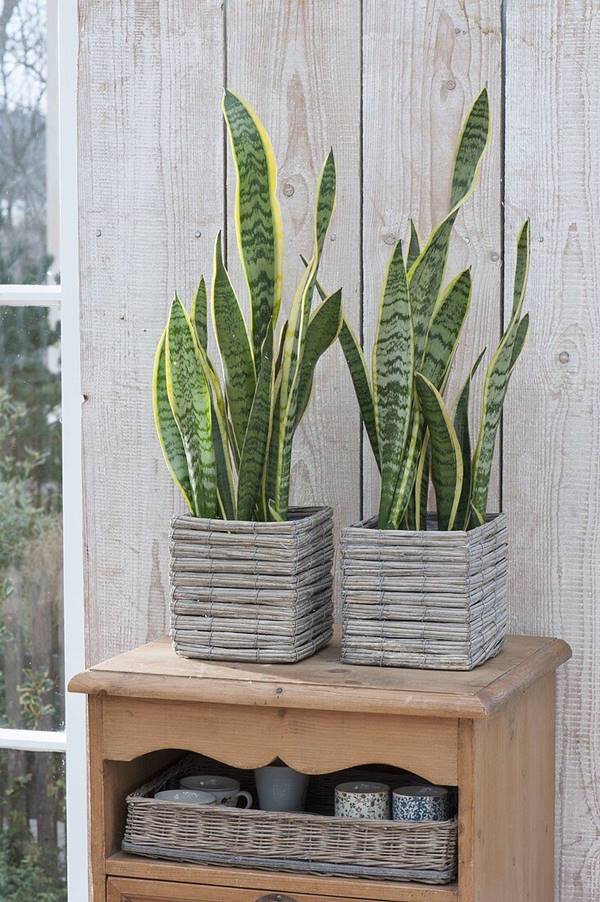
Botanical Name: Sansevieria/Dracaena trifasciata
Also, going by the name mother-in-law’s tongue snake plant has thin and long strap-shaped leaves. It thrives on neglect and is one of the toughest succulents to kill as long as you don’t overwater. In optimal conditions, its variegated foliage can reach 6 feet.
4. Mother of Millions
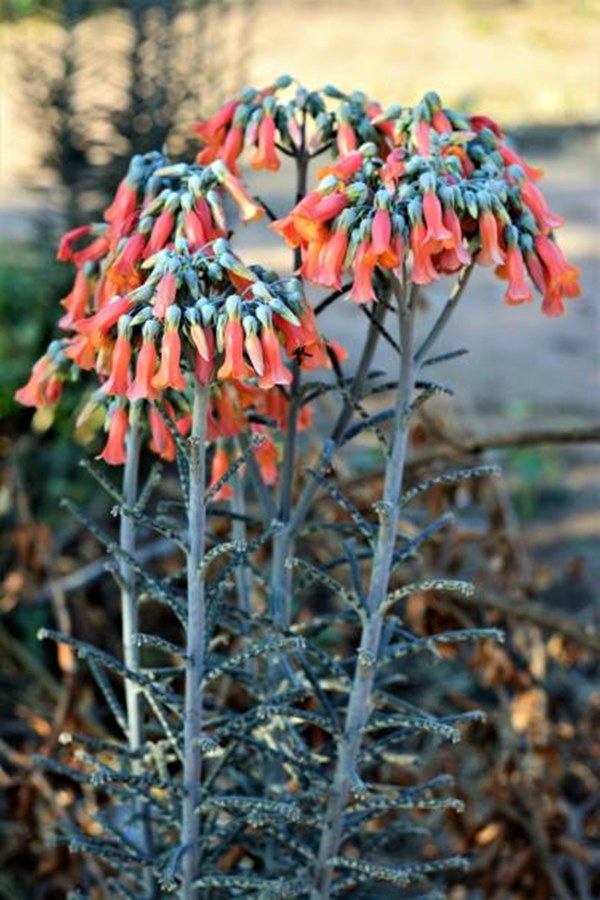
Botanical Name: Kalanchoe Delagoensis
Mother of millions is a unique succulent that bears numerous plantlets at the edge of the leaves, which give rise to new plants. In its natural habitat, it can grow to a whooping height of 7 feet and has a spread of 3 feet. It’s considered invasive in some regions due to its fast reproducing nature.
5. Desert Rose
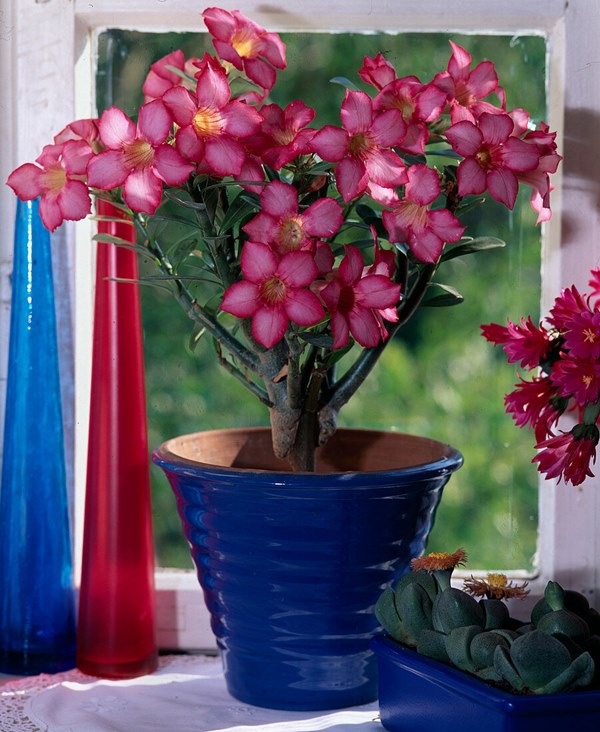
Botanical Name: Adenium Obesum
Blooms ranging from pink to dark red highlight the feature of desert rose that grows to around 4 feet. Thick spiky stem and delicate foliage further add to the beauty of the desert rose. Grow desert rose as an outdoor ornamental plant, bonsai plant, or indoor pots in cold regions.
6. Sticks on Fire
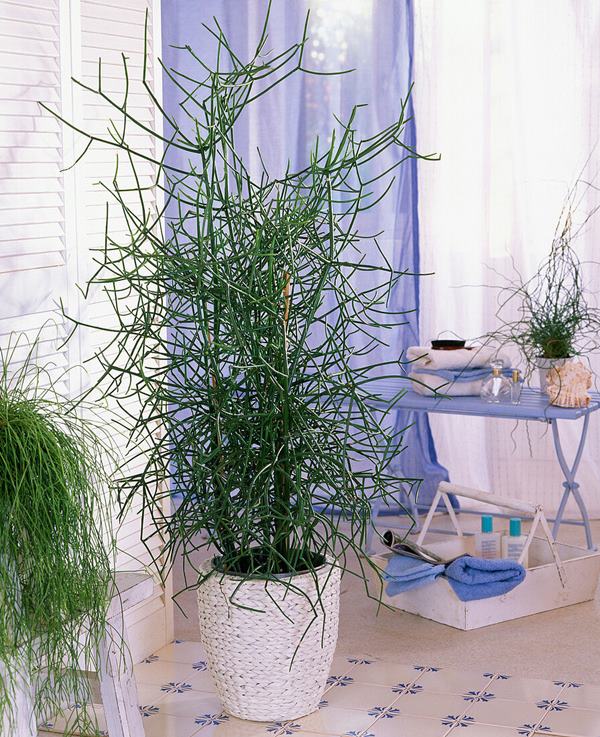
Botanical Name: Euphorbia tirucalli
Also known as fire sticks and pencil trees because of the signature thin cylindrical pencil-like branches growing vertically and having reddish-golden hues. Growing to 4-8 feet tall, it’s pest and disease resistant and a perfect choice for beds, coastal gardens, borders, and even container gardens.
7. Jade Plant
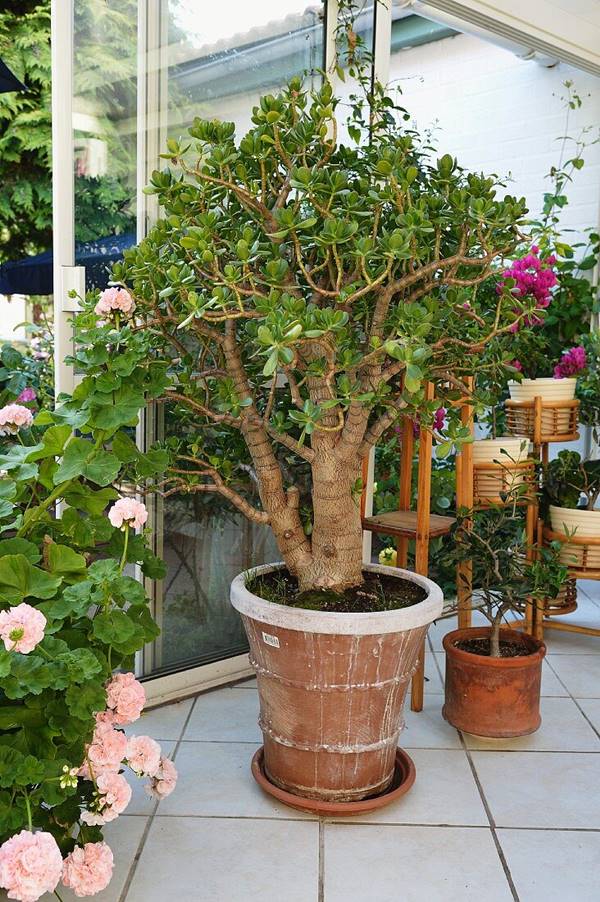
Botanical Name: Crassula ovata
Jade plant is a low-maintenance succulent that’s believed to bring good luck and fortune to the owner. The lustrous green foliage shows a reddish tint when grown in direct sun. Although it’s a slow grower, it can grow 5 to 6 feet tall with time.
8. Foxtail Agave
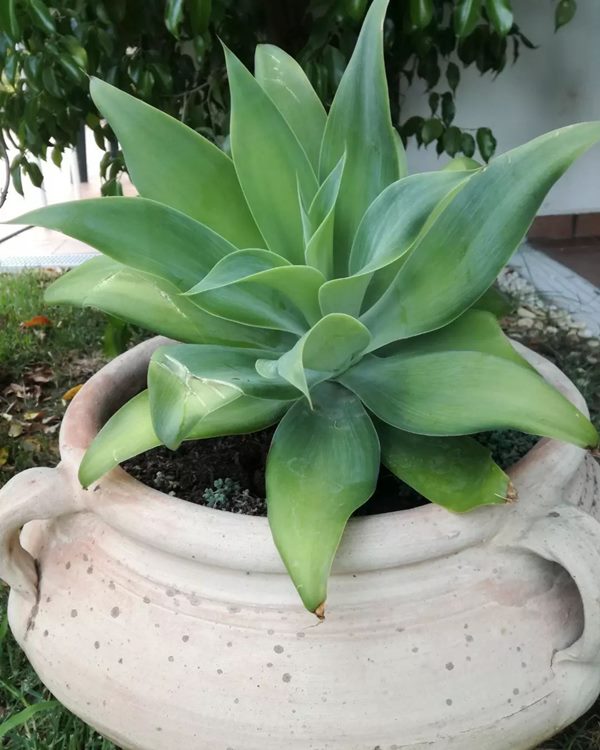
Botanical Name: Agave attenuata
Rosette of silvery-green foliage of this evergreen succulent perennial stands out in any surrounding. It’s an easy-to-care succulent thrives in direct sun but can tolerate shade. The inflorescence is 8-10 feet tall and usually curved with greenish-yellow petals of flowers.
9. Saguaro
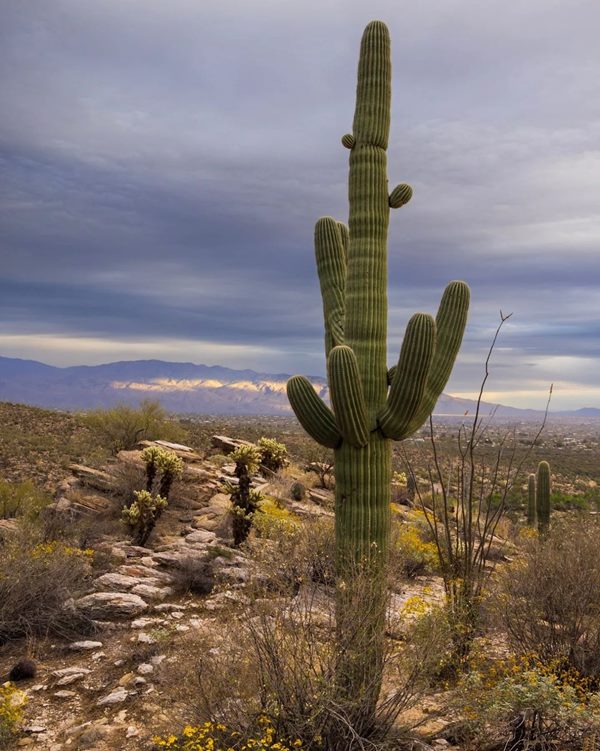
Botanical Name: Carnegiea gigantea
Saguaro is a gigantic stem succulent and is one of the tallest succulents that grow in the United States. It can attain a height of 40 feet and have a lifespan exceeding 150 years. Most will develop branches as they age that also grow vertically upwards.
10. Candelabra Spurge

Botanical Name: Euphorbia Ammak’ Variegata’
The branches of Candelabra spurge form a shape that resembles Candelabra, hence the name. Thick and wavy ribs are usually four-winged with dark brown spikes that contrast nicely with creamy-yellow and pale blue surfaces. It can be 15 to 20 feet tall and spread 6 to 8 feet when mature.
11. Century Plant
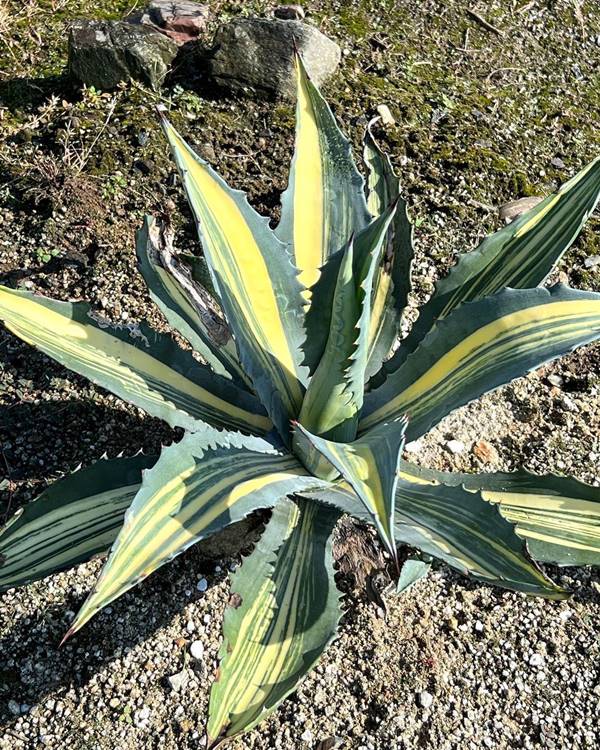
Botanical Name: Agave Americana
Century plant is a popular ornamental agave found in many regions worldwide. Rosette of bluish-green leaves are beautiful and have spiny edges. Use it as a focal point in the backyard or plant it in the container.
12. Madagascar Palm
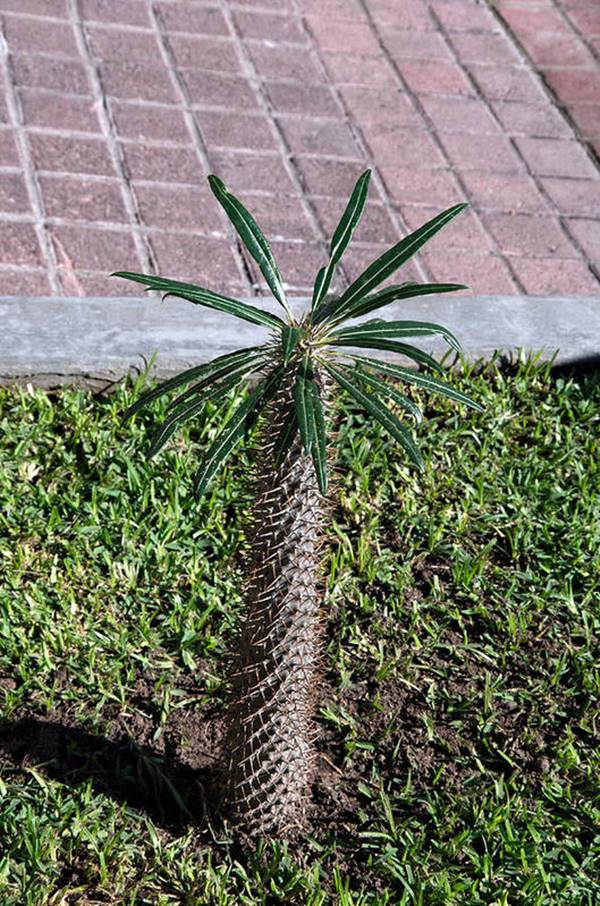
Botanical Name: Pachypodium lamerei
Long leathery green greaves growing on top of a thick succulent stem gives Madagascar palm an exotic appeal. Outdoors can grow to a height of 20 feet, whereas indoors, it grows to 5-6 feet tall. The stem is covered with sharp spines, so handle with care!
13. Elephant’s Ear Kalanchoe
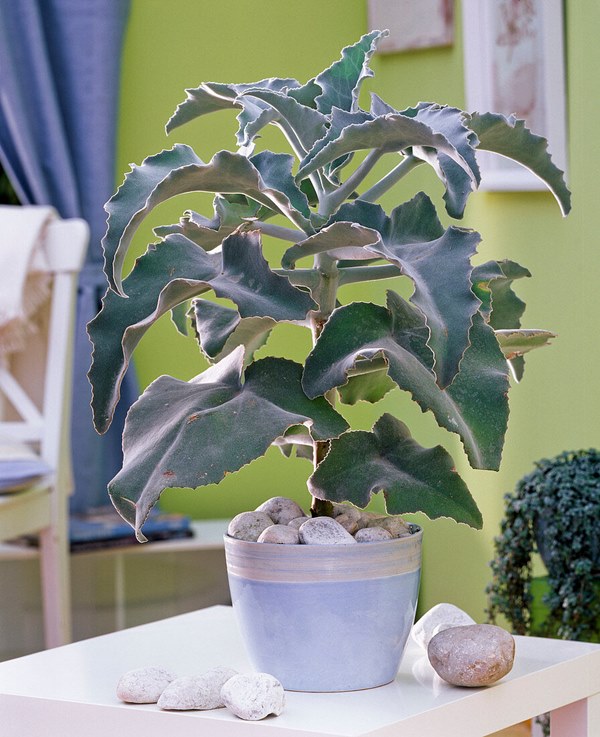
Botanical Name: Kalanchoe beharensis
Growing to 5-10 feet tall, this kalanchoe is also known as Felt bush. The olive-green foliage has ruffled edges and velvety texture, which accentuates the appearance. It’s not frost tolerant, so protection from cold is essential.
14. Eve’s Needle
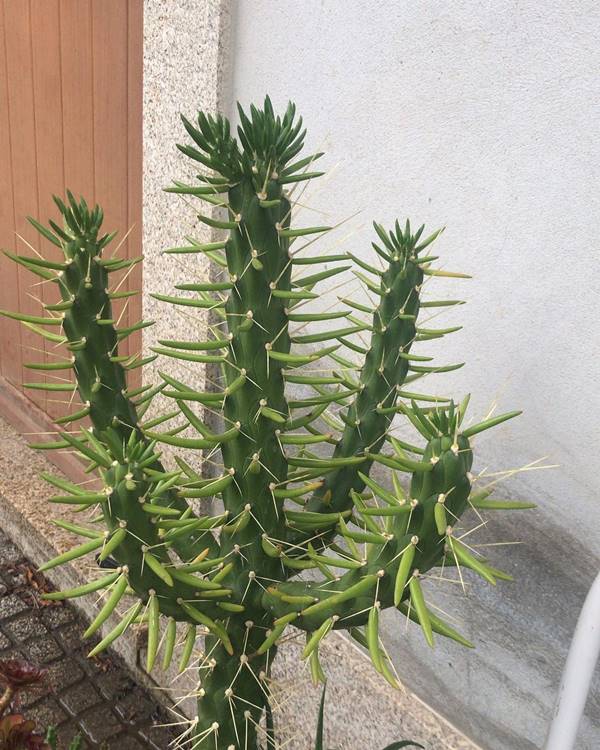
Botanical Name: Austrocylindropuntia subulata
Cylindrical stems of this succulent are covered in long spines giving it a classic cactus appearance. When mature, it can grow to 4 feet tall, blooming at the tips. Eve’s Pin Cactus, Long Spine Cactus, and Chumbera Fina are some other names it goes by.
15. Jumping Cholla
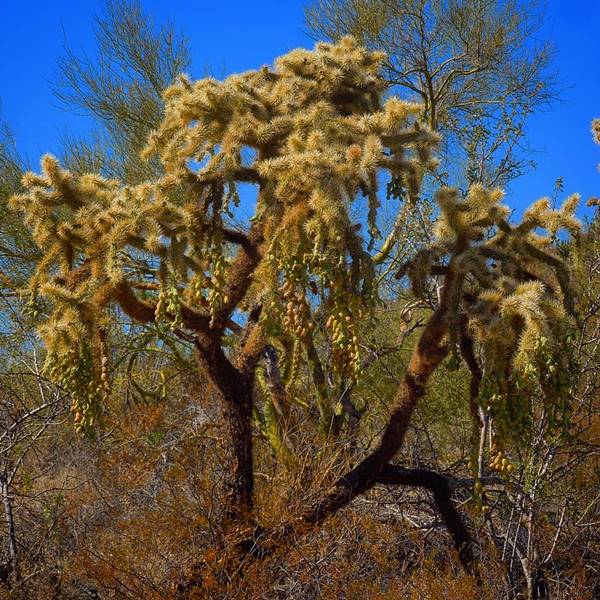
Botanical Name: Cylindropuntia fulgida
It’s a tree-like cactus that can grow to around 13-15 feet tall and features a thick trunk with branches growing from it. Spines cover almost every inch of the plant, obscuring the stems. Provide lots of sun, light, and less water for adequate growth.
16. Queen of the Night
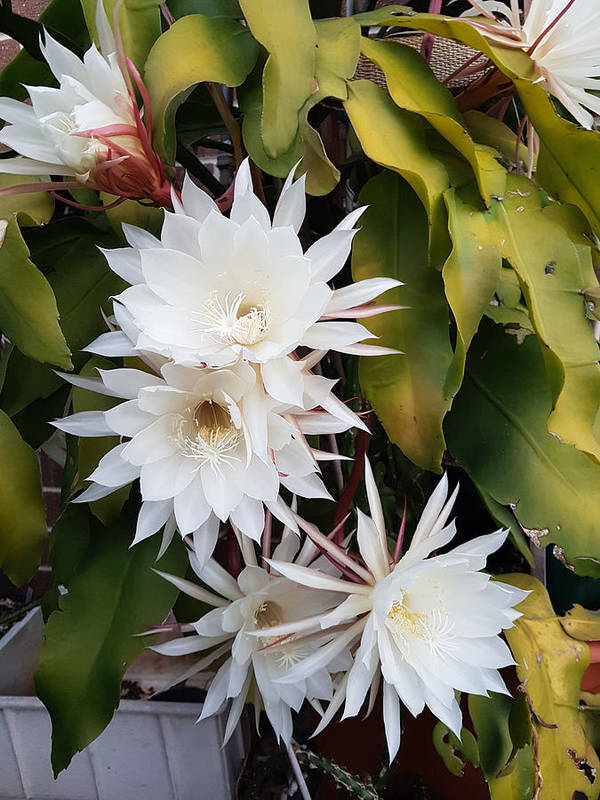
Botanical Name: Epiphyllum oxypetalum
Going by the name Orchid cactus, Queen of the night rarely blooms once a year, adding a mysterious appeal. Being an epiphyte, it grows on trees and other surfaces in a natural tropical habitat. You can grow Queen of the night via leaf cuttings!
17. Ocotillo
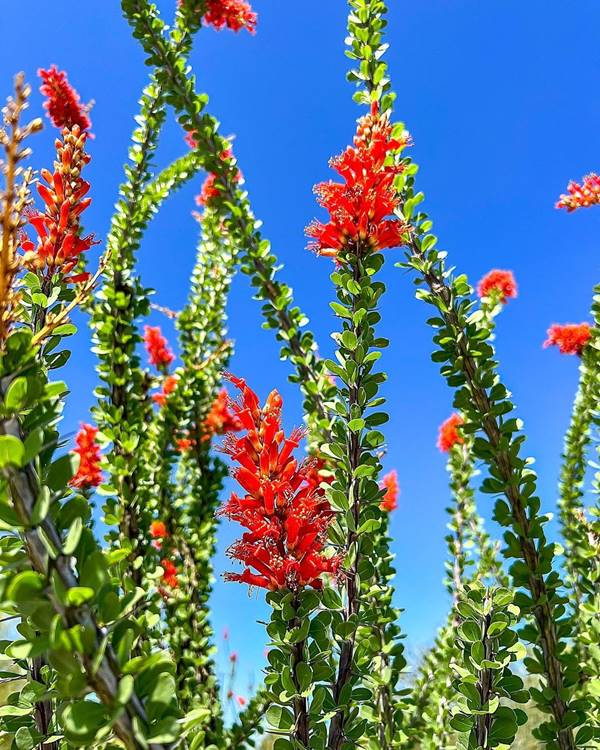
Botanical Name: Fouquieria splendens
Ocotillo stands out in the Sonoran and Colorado deserts with its long cylindrical stems. Growing to 33 feet tall, it branches at the base but grows as individual stems after a certain length.
18. Prickly Pear Cactus
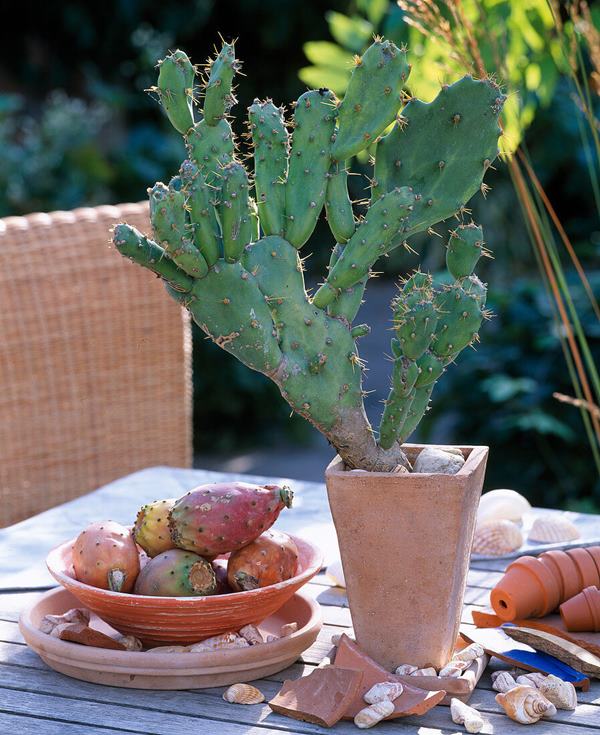
Botanical Name: Opuntia
Prickly pear cactus has quite a reputation and is hardy in cold regions with USDA zones as low as four. It has oval-shaped pads for foliage with spines all over; varieties grow from mere inches to over 15 feet tall.
19. Burbank’s Spineless Cactus
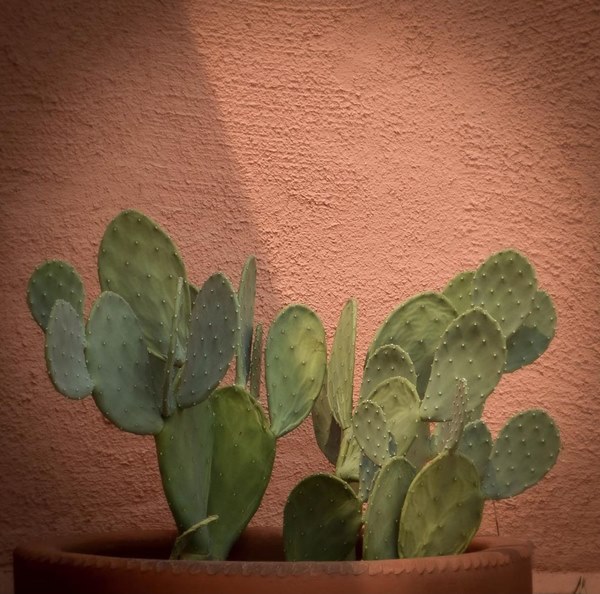
Botanical Name: Opuntia ficus-indica
It’s a prickly pear-like succulent that doesn’t have spines but has similar wide and flat branching pads. So if you have something against the spines, this is the cactus you should choose.
20. Fishhook Barrel Cactus
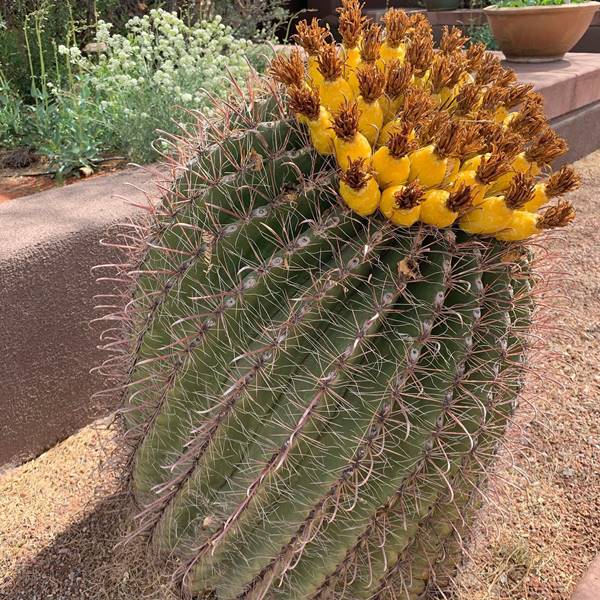
Botanical Name: Ferocactus wislizeni
It can grow from 3-6 feet in height and is shaped as a barrel with fishhook-like spines, hence the name. It’s a blooming cactus that bears bright orange to yellow flowers.
